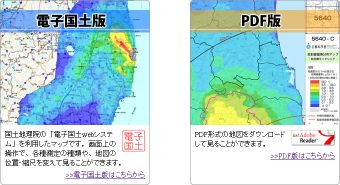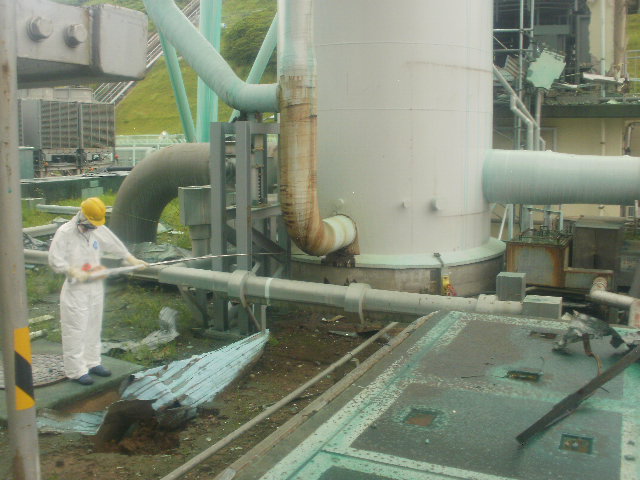On April 12, one month after the devastating earthquake and tsunami that took TEPCO by surprise, leading to the meltdown of three reactor cores in Fukushima 1, the Japanese government raised its accident rating for the event. It moved it from a level 5 on the INES scale to a level 7 (same as Chernobyl), based on the amount of radioactivity released by then. At the time the Nuclear and Industrial Safety Agency (NISA) estimated that 370,000 terabecquerels (TBq) had been released into the environment, while the Nuclear Safety Commission (NSC) calculated the release as 630,000 TBq, with all nuclides converted to an equivalent amount of I-131 for comparison purposes.
Yes, we were told, Fukushima technically now ranked on the same scale as Chernobyl, but it had released “only” 10% of the radioactivity of the worst nuclear accident in history. The total release from Chernobyl is estimated at 5,200,000 TBq.
Now NISA has revised its estimate for Fukushima. “NISA on Monday more than doubled its estimate of the radioactive material ejected into the air in the early days of the Fukushima nuclear crisis to 770,000 terabecquerels,” reports the Japan Times. Apparently, the revision was based on the realisation that unit 2 not only leaked through the ruptured suppression chamber as previously known, but also leaked radioactive substances through a damaged containment.
That containment, if you remember the early days of the accident, was going to be why Fukushima was not going to be “another Chernobyl”. Or so we were promised. Now we know it leaked in all three units and even if it had worked, it was so weak that it would have ruptured if some of its content wasn’t intentionally leaked (“vented”) anyway.
Hot water in unit 2
TEPCO has installed a heat exchanger in the spent fuel pool of unit 2, in the only building amongst units 1-4 that still has a roof on it. They were hoping this would allow them to start repairing other parts of the reactor as soon as possible. Their theory was that the high humidity (greater than 99%) in the building was caused by evaporation from hot water in the spent fuel pool under the roof, with the moisture getting trapped inside the building. They managed to bring down the pool temperature much more quickly than anticipated, but to their surprise the humidity didn’t budge much: Unit 2 is still as moist as a greenhouse. This high humidity prevents air filters from being used for bringing down radioactivity levels in the air inside the building before sending in repair crews.
The humidity is probably rising off hot water in the basement. The radioactive decay of what’s left of the reactor core currently still produces about 6 MW of heat inside the containment, which is conducted through the concrete, pipework and any water and steam leaks. 6 MW of heat is roughly the amount of heat that would be produced burning 600 liters of kerosene every hour.
Nobody is really sure where the cores are now. They could still mostly be inside the reactor pressure vessel, with only a small amount leaked into the containment. Or it could be mostly on the concrete floor of the containment. Nobody really knows for sure yet.
Assuming the cores in all three units have melted, the melted core (“corium”) probably has much lower heat output than it originally did, because some 70% of the decay heat in nuclear fuel are from the more volatile elements. Once the uranium oxide heats up high enough to liquify, the volatile elements trapped inside the uranium ceramics can boil off and escape. Later they condensate inside the walls of the pressure vessel or containment. There they mostly get dissolved in water when cooling gets reestablished. After that the lump of uranium and plutonium oxide will only give off some 30% of its original decay heat because so much of the radioactivity will now be elsewhere in the reactor pressure vessel, the containment or other locations.
No pressure in unit 1 RPV and they knew
TEPCO sent workers into unit 1 to install new manometers to measure pressure inside the reactor. Doing their work they were exposed to about 4 mSv each, more than an ordinary person would receive during a whole year, but their risk has enabled us to receive proper data about the reactor pressure in unit 1.
As it turned out, the reactor pressure vessel (RPV) of unit 1 is at atmospheric pressure, which suggests the RPV is connected to the containment (i.e. has holes) and the containment is connected to the outside too. For weeks TEPCO had been pumping nitrogen gas into the RPV to dilute any existing hydrogen, in order to guard against the risk of explosions. No evidence of this nitrogen can be found now, or at least no gas pressure from its pressence.
In parallel with the nitrogen injection, a pressure gage for unit 1 had been showing increasing pressures in the unit 1 RPV, climbing as high as 1,6 MPa (about 16 bar) over the last couple of weeks. However, even before TEPCO installed a new gage they knew that value was wrong, without them telling the public. How do we know that they knew? As physicsforums.com member “elektrownik” noticed, the new gage that they had those workers install has an instrument range of only 0.0 to 0.3 MPa…
TEPCO makes space for a lot of water
The Daily Yomiuri has a picture of some of the water tanks that TEPCO is buying for Fukushima 1. It has ordered 200 tanks holding 100 t each and 170 tanks holding 120 t each, for a total of 40,000 t. Several of these will be brought in each night by truck.
At the roughly 500 t of water that TEPCO pumps in for cooling purposes per day the tanks would last for less than three months. From June 15 TEPCO is planning to recycle 1200 t of highly radioactive water per day, pumped from the reactor buildings. It wants to either reuse it for cooling or to send it to the reprocessing plant in Rokkasho village for final cleanup.
If the water treatment plant doesn’t work as expected, that would be one surprise that TEPCO could definitely do without. The tanks may be one form of insurance against that possibility.


